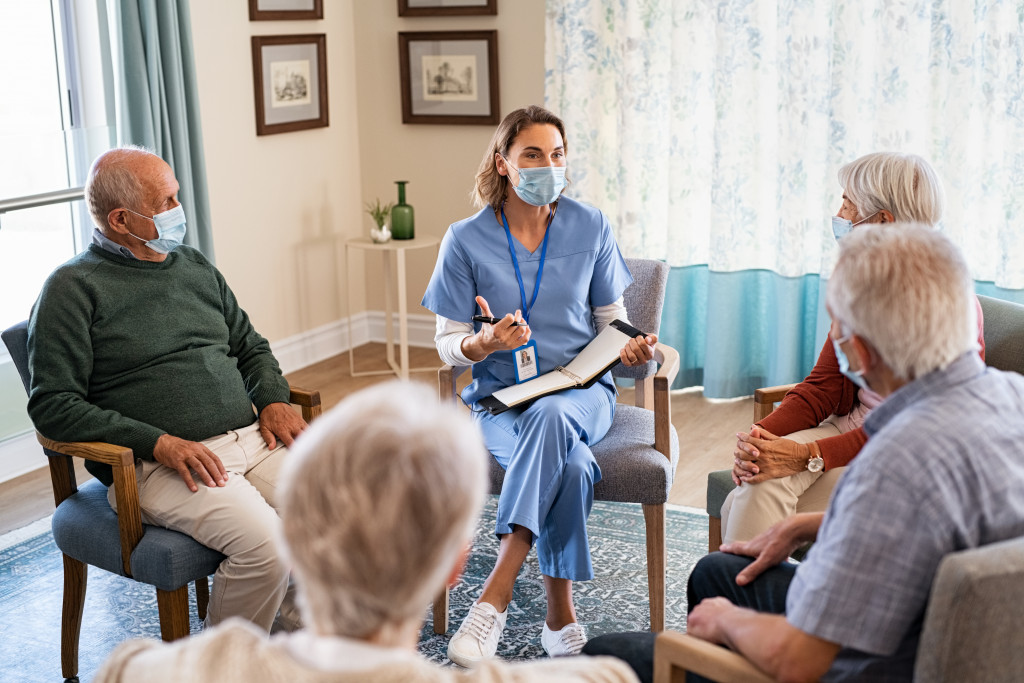As a community, there are many ways we can work together to improve public health. From developing better nutrition education programs to increasing access to healthcare services, there are plenty of initiatives you can take to promote healthy lifestyles. Here are some ideas and how they can help your community be healthier.
Health Education Programs
Health education programs provide the public with knowledge regarding healthy living practices, such as proper nutrition and physical activity. These programs also raise awareness about the dangers associated with unhealthy behaviors, like smoking and excessive alcohol consumption. Health education initiatives can take many forms, from school-based courses to online resources that teach health topics. These programs are critical for helping people make informed decisions about their health to lead longer, healthier lives. To get started with these programs, follow these steps:
- Research current health topics and discuss them with community members
- Develop educational materials to help people understand the benefits of healthy living
- Identify local partners who can help support your programs, such as hospitals and schools
- Host events or workshops to inform citizens in your community
- Invite experts to speak about health topics at community gatherings
You can also focus on a specific age group. For example, suppose you’re having problems with teenage smoking. In that case, you can create a program that focuses on the health risks associated with smoking and the importance of quitting. Or, if there are health issues that the senior members raise, like arthritis or diabetes, you can create a program that focuses on managing and preventing those conditions.
Organize Medical Missions
Medical missions are great ways for communities to provide medical services and health education to people without access to healthcare. Local volunteers can come together through these one-day events to offer free medical screenings, vaccinations, and other essential health treatments. Volunteers can also provide health information to help citizens make better health decisions. Here are the medical services that you can provide for the community:
Medical Screenings
Medical screenings include blood pressure tests, vision checks, cholesterol tests, and other health assessments. These screenings help identify any possible issues that people may have and enable them to take steps to prevent further complications. These screenings are beneficial, especially to the elderly that do not have access to regular medical care.
General Dentistry
Dental care is essential to health, but many low-income people lack access. Organizing a medical mission with general dentistry services can help promote healthy oral hygiene and relieve dental issues like cavities or gum disease. The services can include cleanings, fillings, and extractions. X-rays would also be available to help diagnose any major oral issues, such as impacted wisdom teeth or an abscess.
Vaccinations
Vaccinations are a great way to protect the community from various illnesses. Vaccines can be administered before medical missions, during the event itself, or offered to those who cannot attend the mission in advance. This helps prevent outbreaks of contagious diseases that may be harmful to the community. You can prepare vaccines against common illnesses, like the flu or measles, and other diseases that may affect your region.
Nutrition Education
Nutrition education is essential for teaching people the importance of healthy eating habits and making the best dietary choices. Volunteers can help with meal planning and nutritional value information for common foods during medical missions. They can also offer advice on portion control and explain which foods are best for different dietary needs. The importance of growing food can also be included in nutrition education. People can be taught how to grow food in their backyards and source healthy meals without breaking the bank.

Access to Healthcare Services
Another way to improve public health is by increasing access to healthcare services in the community. This includes providing free or low-cost medical care for those without insurance coverage. This ensures all community members have access to quality primary care providers who accept their insurance plans. Accessible healthcare helps individuals stay on top of any illnesses or diseases, which increases their chances of leading a healthy lifestyle in the long run.
You can plan on bringing a clinic on wheels where you can provide medical services to those in need or work with local hospitals and health centers to help give access to care. You can also collaborate with local health departments to provide preventative care and education. This could include distributing information on reducing the spread of contagious diseases in the community.
Organize Community Health Workshops
Workshops are an effective way to educate and empower citizens on topics related to public health. These can be organized with medical missions and involve various activities, such as educational talks and hands-on demonstrations. The workshops can cover nutrition, sanitation, healthy living habits, and emergency care. You can also include information on how to access basic healthcare services. You can also create other resources that people can use, such as health checklists and symptom-tracking tools.
Improving public health requires collaboration between members of the community and those who provide healthcare services. By offering to improve public health in the community, you can help create a healthier environment for everyone. Working together is the best way to ensure that all community members have the resources they need to stay healthy.




